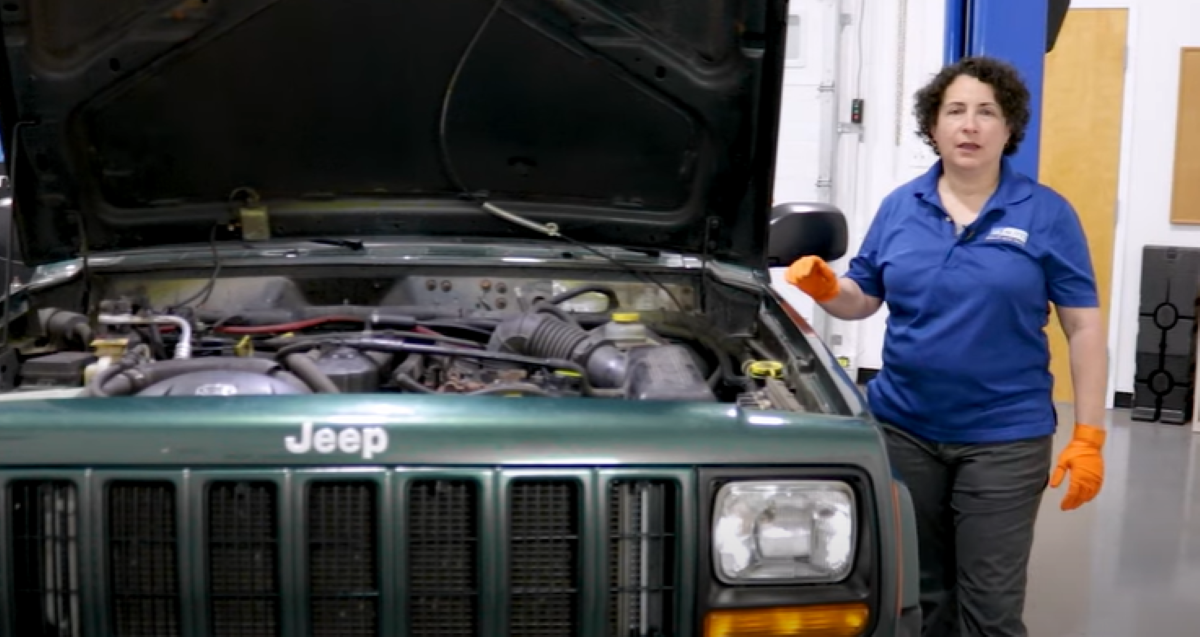While there is nothing inherently wrong with the 4.0-liter engine found in the 1984 to 2001 Jeep Cherokee and many other Jeep vehicles from this time period, it does have its common issues. Learn the top 4 4.0-liter Jeep engine problems owners have run into and their fixes and symptoms.
Top 4 Problems with the 4.0 Liter Engine in the 1984 to 2001 Jeep Cherokee

1. Crankshaft Position Sensor Failure

Signs of Crankshaft Position Sensor Failure
- Engine cranks but won’t start the vehicle
Causes of Crankshaft Position Sensor Failure
The faulty crank sensor is the main reason for crankshaft position failure. The sensor may be from overheating from being placed between the bell housing and the engine block.
How to Fix Crankshaft Position Sensor Failure
We recommend checking and testing the crank sensor first if the engine has these symptoms. It can be tedious to replace the crank sensor, so we recommend buying a quality one
2. Exhaust Manifold Cracking

Signs of Exhaust Manifold Cracking
- Cracks on the exhaust manifold
- Ticking noise at start up that later fades
Causes of Exhaust Manifold Cracks
The factory exhaust manifold has 6 outlets welded into sharp “V” points. The exhaust manifold’s weld eventually splits, so it was updated with two exhaust flex pipes on either end to extend its life. It may take a couple of hours to replace the manifold and gasket. When doing this repair, we recommend buying a metal gasket. The carbon gasket tends to deteriorate faster.
Read more on how to diagnose an exhaust manifold leak
3. Oil Leak

Signs of an Oil Leak
- Oil leaking from the oil housing
- Oil leaking from the rear main seal
How to Fix an Oil Leak
If the oil housing is leaking, replace the oil filter housing and gaskets.
If the rear main seal is defective, you’ll have to diagnose it. To diagnose it, run the vehicle, make sure you have a clean spot underneath, and as soon as the vehicle shuts off, there should be a drip from the rear main seal. The oil pan will leak when the vehicle is running, and it won’t leak as quickly as the rear main seal when the Cherokee is turned off.
4. Exhaust Valve Carbon Build-Up
Signs of an Exhaust Valve Carbon Build-Up
- Misfire or feeling the engine shake
- Ticking constantly at upper end of engine
How to Fix Exhaust Valve Carbon Build-Up
You might change the spark plugs under the appearance of a misfire and notice the problem is still occurring. A leak down test can confirm an exhaust valve leak.
There is a technical service bulletin for this issue. Steps to fix it include removing the valve cover, checking cylinder compression and valve timing, undoing the valve spring, and turning the exhaust valve 180 degrees then go on to next cylinder and do a carbon clean. Where the seat head meets is where carbon build up tends to occur.
Pro tip: This problem could be prevented with quality oil, regular oil changes, and a gas additive
How-to Videos: Learn More than 4.0 Liter Jeep Engine Problems
Watch and follow the steps in our how-to videos and learn to fix tons of parts on hundreds of models yourself.
Expert Tips
- Top 5 Ford F250 Super Duty Problems: Years 1999 to 2007
- Top 6 1997 to 2006 Jeep Wrangler Problems
- What Does a Leveling Kit Do? Leveling Kits Explained
- Bolt Stuck in a Shock Bushing? How to Remove Rusted Shock Bolts
- Wheel Bearings & Wheel Hubs 101: What They Are And How They Fail
Shop Parts and Tools
- Brakes & Wheel Bearing
- Steering & Suspension
- Headlights & Lighting
- Drivetrain
- Heating & Cooling
- Fuel & Emissions


